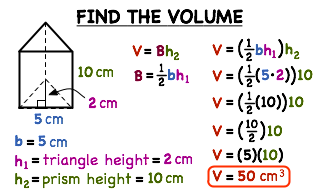
I teach Maths, English Grammar and Spoken English efficiently. My wish is to teach the children of all countries online. My classes will be interactive and interesting. I render assignment help and proof reading through e-mail learning and whatsapp learning. skype id: selviraveendran mail id : onlinetutorselviraveendran@gmail.com Whatsapp No: 9442624629
Popular Posts
-
SENTENCE PATTERNS WITH EXAMPLES Subject (S) Verb (V) Object (O) Complement (C) Adverbial (A) Direct Object (DO) Indirect...
-
Sentence Pattern - Exercise Identify the pattern of the following sentence : 1.She / will come a) SV b) SVO c) SVC d) SVO...
-
7 Basic Sentence Patterns The English language has seven basic sentence (or clause) patterns. Examples are: John / laughed. (SV)*...
-
Sentence Pattern: What is sentence pattern? Systematic arrangement of words in a sentence meaningfully is sentence pattern...
-
TYPES OF SENTENCES In writing and speaking, there are four basic types of sentences that we use for different purposes: declarati...
-
FINITE AND NON-FINITE VERBS Identify the finite and non-finite verbs in the following sentences. 1. My little brother wants to be ...
-
PHRASES WORKSHEET Identify the phrases in the following sentences and state their kind 1. He was a man of great wealth. 2. Th...
-
English Grammar Worksheets Free PDF ebook Download from Larisa School of Language Nikolaev Ukraine over One Hundred Pages from Laris...
Saturday, February 20, 2016
DIFFERENTIATION OF EXPONENTIAL FUNCTIONS
DERIVATIVE OF THE EXPONENTIAL FUNCTION
The derivative of ex is quite
remarkable. The expression for the derivative is the same as the expression
that we started with; that is, ex!
It means
the slope is the same as the function value (the y-value) for all points on the
graph.
Example: Let's
take the example when x = 2. At this point, the y-value is e2 ≈ 7.39.Since the derivative of ex is ex, then the slope of the tangent line at x = 2 is also e2 ≈ 7.39.
We can see that it is true on the graph:
Let's now see if it is true at some other values of x.
We can see that at x = 4, the y-value is 54.6 and the slope of the tangent (in red) is also 54.6.
At x = 5, the y-value is 148.4, as is the value of the derivative and the slope of the tangent (in green).
DIFFERENTIATION OF EXPONENTIAL FUNCTIONS
|
Solve the following problem
Differentiate y=e^(ax+b)
where a and b are constants
Let u = ax + b and y = e ^u
Use the chain rule to
find the derivative of function as follows
dy/dx = (dy / du) (du /
dx)
dy / du = e ^u and du / dx = a ( Since the derivative
of the constant b is 0)
Hence dy/dx = (e ^u)(a) = a e ^u
Hence dy/dx = (e ^u)(a) = a e ^u
Substitute u = ax + b in dy/dx above
dy/dx = a e ^ax + b
dy/dx = a e ^ax + b
VOLUME OF A TRIANGULAR PRISM

www.VirtualNerd.com
SUMMARY
- B stands for the area of the base
- Since our bases are triangles, we can use (1/2)bh for B
- We can call the height of the triangle h1 and the height of the prism h2 to avoid confusion
- Volume is measured in units cubed, so we have 50 cm3

NOTES

- The volume of a prism is V=Bh
- B is the area of the base of the prism
- h is the height of the prism
- The base of our prism is a triangle, so we can use (1/2)bh, the area of a triangle, for B
- We can call the height of the triangle h1 and the height of the prism h2 to avoid confusion

- V is the volume, which is what we are trying to find
- b is the base of the triangle, which is 5 cm
- h1 is the height of the triangle, which is 2 cm
- h2 is the height of the prism, which is 10 cm

- We can plug 5 in for 'b', 2 in for 'h1', and 10 in for 'h2' in our equation

- We need to use the order of operations to simplify the right hand side
- First multiply 5•2 in the innermost parentheses
- Then multiply (1/2)•10 within the next set of parentheses
- This is the same as 10/2, or 5
- Then multiply 5•10 to get 50 cm3
Subscribe to:
Comments (Atom)








